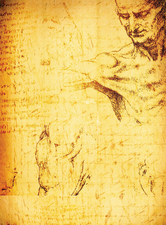Visual programming languages
Da Vinci Code

© Lead Image © Janaka Dharmasena, 123RF.com
Developers working with graphical programming languages point and click to build software from prefabricated modules. We look at five free visual programming development environments.
With graphical development environments, programmers simply use a mouse to draw a flowchart; then, the development environment translates it into a finished application. Developers do not need to learn cryptic commands, and they neither produce syntax errors nor suffer buffer overflows. Ideally, the development environment will even step through the program, visually emphasizing the currently active component and dramatically facilitating the troubleshooting process.
The first graphical development environments emerged in the 1960s, but only GUI editors or Rapid Development (RAD) tools are in common use. Developers use them to click together user interfaces for their applications (e.g., Glade [1] and Qt Designer [2]); however, in reality, only laboriously typed chunks of code bring the GUI elements to life. Design tools are similarly restricted, especially tools for Unified Modeling Language [3]. Again, they generate a code framework that the programmer fills with content at the keyboard.
If you look hard, you will find a surprisingly large number of visual programming languages (VPLs), for which their inventors usually include a suitable development environment. Often, the development environment is designed with a specific field of application in mind.
[...]
Buy this article as PDF
(incl. VAT)
Buy Linux Magazine
Subscribe to our Linux Newsletters
Find Linux and Open Source Jobs
Subscribe to our ADMIN Newsletters
Support Our Work
Linux Magazine content is made possible with support from readers like you. Please consider contributing when you’ve found an article to be beneficial.

News
-
Linux Mint 22.3 Now Available with New Tools
Linux Mint 22.3 has been released with a pair of new tools for system admins and some pretty cool new features.
-
New Linux Malware Targets Cloud-Based Linux Installations
VoidLink, a new Linux malware, should be of real concern because of its stealth and customization.
-
Say Goodbye to Middle-Mouse Paste
Both Gnome and Firefox have proposed getting rid of a long-time favorite Linux feature.
-
Manjaro 26.0 Primary Desktop Environments Default to Wayland
If you want to stick with X.Org, you'll be limited to the desktop environments you can choose.
-
Mozilla Plans to AI-ify Firefox
With a new CEO in control, Mozilla is doubling down on a strategy of trust, all the while leaning into AI.
-
Gnome Says No to AI-Generated Extensions
If you're a developer wanting to create a new Gnome extension, you'd best set aside that AI code generator, because the extension team will have none of that.
-
Parrot OS Switches to KDE Plasma Desktop
Yet another distro is making the move to the KDE Plasma desktop.
-
TUXEDO Announces Gemini 17
TUXEDO Computers has released the fourth generation of its Gemini laptop with plenty of updates.
-
Two New Distros Adopt Enlightenment
MX Moksha and AV Linux 25 join ranks with Bodhi Linux and embrace the Enlightenment desktop.
-
Solus Linux 4.8 Removes Python 2
Solus Linux 4.8 has been released with the latest Linux kernel, updated desktops, and a key removal.

